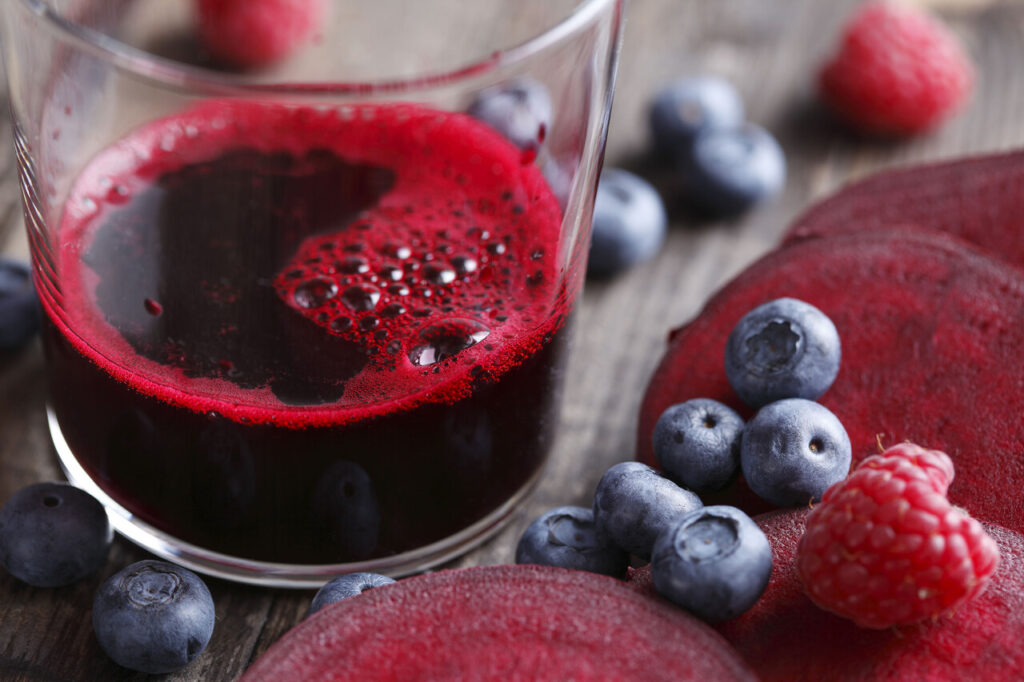
Imagine this: I’m sitting at my kitchen table, sipping on a glass of freshly squeezed orange juice, the morning sun streaming through the window. My doctor’s words from last week’s checkup echo in my mind: “Your blood pressure’s creeping up. Let’s try managing it naturally first.” It’s a wake-up call, but not one I dread. Instead, it feels like an invitation to explore nature’s bounty—fruits, to be exact—that can help keep my heart humming and my blood pressure in check. If you’re reading this, maybe you’re on a similar journey, looking for ways to manage hypertension naturally or simply curious about how your diet can support a healthier you. Let’s dive into the vibrant world of fruits that can help control blood pressure, blending science, stories, and practical tips to make this both enlightening and delicious.
Why Fruits Matter for Blood Pressure
High blood pressure, or hypertension, affects nearly 1 in 3 adults worldwide, silently increasing the risk of heart disease, stroke, and kidney problems. It’s often called the “silent killer” because it can go unnoticed until it’s serious. But here’s the good news: what you eat can make a big difference. Fruits are nature’s powerhouses, packed with nutrients like potassium, magnesium, and fiber that help regulate blood pressure by balancing sodium levels, relaxing blood vessels, and reducing inflammation. I learned this firsthand when I started swapping salty snacks for sweet, juicy fruits—and noticed my energy levels and mood improving, too. Let’s explore why fruits are such a game-changer and which ones deserve a spot in your diet.
The Science Behind Fruits and Blood Pressure
Fruits aren’t just tasty; they’re scientifically backed allies in the fight against hypertension. Potassium, found in abundance in many fruits, helps counteract sodium’s effects, easing tension in blood vessel walls. Studies from the National Institutes of Health show that a potassium-rich diet can lower blood pressure by up to 5 mmHg in some individuals. Magnesium supports vessel relaxation, while antioxidants like vitamin C and flavonoids reduce oxidative stress, a key contributor to hypertension. Fiber, another fruit staple, helps manage cholesterol and weight, indirectly supporting healthy blood pressure. It’s like a symphony where each nutrient plays a vital role, and fruits are the star performers.
Top Fruits for Blood Pressure Control
Not all fruits are created equal when it comes to blood pressure management, but many shine brighter than others. Below, I’ve highlighted the top fruits backed by science, along with their key nutrients and practical ways to enjoy them. Whether you’re tossing them into a smoothie or eating them fresh, these fruits can be your heart’s new best friends.
Bananas: The Potassium Powerhouse
Bananas are my go-to when I need a quick, heart-healthy snack. With about 422 mg of potassium per medium banana, they help balance sodium and ease blood vessel tension. They’re also rich in fiber and antioxidants, which support overall cardiovascular health. I love slicing them into my morning oatmeal or blending them into a post-workout smoothie. Pro tip: pair bananas with a handful of nuts for a magnesium boost, doubling down on blood pressure benefits.
- How to Enjoy: Add to smoothies, bake into healthy muffins, or freeze for a creamy dessert.
- Fun Fact: Eating a banana before a stressful meeting might just keep your blood pressure from spiking!
Berries: Tiny but Mighty
Berries—think blueberries, strawberries, and raspberries—are bursting with flavonoids, antioxidants that studies link to lower blood pressure. A handful of blueberries delivers anthocyanins, which improve blood vessel function. I once made a berry parfait for a family brunch, layering strawberries and yogurt, and it was a hit—proof that healthy can be indulgent.
- How to Enjoy: Toss into salads, blend into smoothies, or eat fresh with a dollop of Greek yogurt.
- Tip: Frozen berries are just as nutritious and perfect for year-round use.
Oranges: Citrus Superstars
Oranges are more than just a vitamin C bomb; they’re loaded with potassium and hesperidin, a flavonoid that research shows can lower blood pressure. I started my orange obsession after my doctor’s advice, and now I keep a bowl of clementines on my counter for easy snacking. Their natural sweetness satisfies my sugar cravings without the guilt.
- How to Enjoy: Eat whole, juice fresh (watch the sugar), or add segments to a spinach salad.
- Bonus: The peel contains compounds that support heart health, so consider zesting it into recipes.
Avocados: Creamy and Heart-Healthy
Avocados might surprise you as a fruit, but their creamy texture hides a treasure trove of potassium, magnesium, and healthy fats. Research from the American Heart Association suggests that monounsaturated fats can reduce bad cholesterol, indirectly aiding blood pressure control. I love spreading avocado on whole-grain toast or blending it into a chocolate mousse for a decadent treat.
- How to Enjoy: Make guacamole, add to sandwiches, or blend into smoothies for creaminess.
- Note: Moderation is key due to their calorie density.
Pomegranates: The Antioxidant All-Star
Pomegranates are like jewels in both appearance and health benefits. Their juice is rich in antioxidants called punicalagins, which studies indicate can lower blood pressure by improving blood flow. I once tried pomegranate seeds in a quinoa salad, and the burst of flavor was unforgettable.
- How to Enjoy: Sprinkle seeds on salads, drink unsweetened juice, or add to yogurt.
- Caution: Check with your doctor if you’re on medications, as pomegranate can interact with some drugs.
Kiwi: The Underrated Gem
Kiwis are small but mighty, packing potassium, vitamin C, and fiber. A study in the Journal of Hypertension found that eating three kiwis daily lowered blood pressure more than an apple a day. I started adding kiwis to my breakfast routine after reading this, and their tangy sweetness never fails to brighten my morning.
- How to Enjoy: Scoop and eat, slice into fruit salads, or blend into green smoothies.
- Fun Fact: The fuzzy skin is edible and adds extra fiber if you’re feeling adventurous!
Comparison Table: Fruits for Blood Pressure at a Glance
| Fruit | Key Nutrient | Blood Pressure Benefit | Serving Size | Calories |
|---|---|---|---|---|
| Banana | Potassium (422 mg) | Balances sodium, relaxes blood vessels | 1 medium | 90 |
| Blueberries | Flavonoids | Improves vessel function, reduces inflammation | 1 cup | 85 |
| Orange | Potassium, Hesperidin | Lowers BP, supports vessel health | 1 medium | 62 |
| Avocado | Potassium, Healthy Fats | Reduces cholesterol, supports heart health | 1/2 fruit | 160 |
| Pomegranate | Punicalagins | Enhances blood flow, lowers BP | 1/2 cup seeds | 72 |
| Kiwi | Potassium, Vitamin C | Reduces BP, improves endothelial function | 1 medium | 42 |
Note: Nutrient values are approximate and based on USDA data.
This table makes it easy to see why these fruits are top picks. Keep it handy when planning your grocery list!
How to Incorporate These Fruits into Your Daily Life
Adding blood pressure-friendly fruits to your diet doesn’t have to feel like a chore. Here are some practical, fun ways to make them part of your routine:
- Breakfast Boost: Start your day with a smoothie blending bananas, berries, and a splash of orange juice. Add spinach for an extra nutrient kick.
- Snack Smart: Keep pre-cut kiwi or orange segments in the fridge for grab-and-go snacks. Pair with a few almonds for a satisfying combo.
- Salad Savvy: Toss pomegranate seeds or avocado chunks into your salads for a burst of flavor and heart-healthy nutrients.
- Dessert Done Right: Freeze bananas or blend avocados into a creamy dessert to satisfy sweet cravings without processed sugars.
I remember the first time I tried a kiwi-avocado smoothie—it sounded odd, but the creamy-tangy combo was a revelation. Experimenting with these fruits has made eating healthy feel like an adventure rather than a sacrifice.
Lifestyle Synergies: Beyond Just Eating Fruits
While fruits are fantastic, they work best as part of a broader lifestyle approach. The DASH diet, designed specifically for blood pressure control, emphasizes fruits alongside vegetables, lean proteins, and low sodium. Regular exercise, stress management (think yoga or meditation), and adequate sleep amplify the benefits of a fruit-rich diet. I started taking evening walks after adding more fruits to my meals, and the combination left me feeling lighter and more energized.
- Exercise: Aim for 30 minutes of moderate activity, like brisk walking, most days of the week.
- Stress Less: Try deep breathing or mindfulness to keep cortisol levels in check.
- Sodium Watch: Check labels and aim for less than 2,300 mg of sodium daily.
FAQs: Your Burning Questions Answered
Q: How many servings of fruit should I eat daily for blood pressure control?
A: The American Heart Association recommends 4–5 servings of fruit daily (about 1/2 cup per serving). Mix and match the fruits above for variety and maximum benefits.
Q: Can fruit juice help with blood pressure?
A: Unsweetened juices, like orange or pomegranate, can help, but whole fruits are better due to their fiber content. Limit juice to 4–6 oz daily to avoid excess sugar.
Q: Are there fruits to avoid if I have high blood pressure?
A: Most fruits are beneficial, but avoid canned fruits in heavy syrup or those packed with added sodium. Always check labels.
Q: Can I eat these fruits if I’m on blood pressure medication?
A: Generally, yes, but consult your doctor, especially with pomegranates or grapefruit, which can interact with certain medications.
Q: How quickly can fruits lower my blood pressure?
A: Results vary, but studies suggest consistent fruit intake, combined with lifestyle changes, can show improvements in 4–8 weeks.
Potential Risks and Considerations
While fruits are generally safe, there are a few things to keep in mind. Overdoing it on high-sugar fruits like bananas can lead to weight gain, which isn’t great for blood pressure. If you have kidney issues, high-potassium fruits might need moderation—check with your doctor. Also, be mindful of allergies or sensitivities, especially with exotic fruits like kiwi. I once overindulged in oranges and ended up with a tummy ache, a reminder that balance is key.
Conclusion: A Fruitful Journey to Better Health
As I sit here, munching on a handful of blueberries, I’m reminded that managing blood pressure doesn’t have to be a bland, clinical process. It’s about embracing the colors, flavors, and textures of nature’s finest fruits while making small, sustainable changes to your lifestyle. From the potassium-packed banana to the antioxidant-rich pomegranate, these fruits offer a delicious way to support your heart. My own journey started with a simple swap—fruits for chips—and it’s led to better checkups and a newfound love for experimenting in the kitchen.
Ready to start? Pick one fruit from this list and incorporate it into your day. Maybe try a new recipe, like a berry smoothie or an avocado salad. Pair it with a walk, a deep breath, and a commitment to checking your blood pressure regularly. Your heart will thank you, and who knows? You might just find yourself enjoying the journey as much as I have. For more tips on heart-healthy eating, explore the DASH diet resources or consult a nutritionist to personalize your plan. Here’s to a healthier, happier you—one juicy bite at a time.
